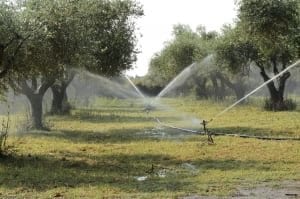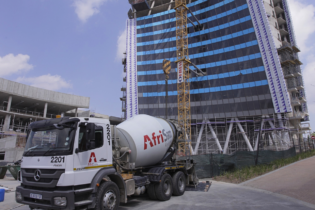WRC investigates water use and crop parameters of pastures for livestock grazing
Irrigated agriculture currently faces strong competition for the substantial share of water as the water use for industrial, domestic, municipal and other activities increase rapidly. There is a need to increase water and land productivity, to meet the increasing demand for animal protein as human population increases, consumers become more affluent with lifestyle changes and diets become more diverse. Natural veld cannot fulfil this need for animal production alone which must be supplemented with irrigated and fertilised planted pastures. To achieve this farmers use fertilisers and water intensively, which leads to a higher cost of production and a greater risk of environmental pollution. As part of shedding some light into this problem the Water Research Commission (WRC) initiated and funded a 5-year project to study the irrigation management of ryegrass/kikuyu pasture under different pasture management conditions. From this project, irrigation guidelines of ryegrass including calendars for the major pasture growing areas of South Africa were developed. In addition, a simple irrigation scheduling model was parameterised and tested and is now available to be used by farmers for their own specific conditions. However, only limited research was conducted on kikuyu and kikuyu/ryegrass mixtures. As part of the newly started WRC project under the leadership of the University of Pretoria, Department of Plant Production and Soil Science, this promising practice of temperate legume with tropical grass or temperate grass mixture and the most commonly practised grazing mixture of kikuyu/ryegrass is being researched. “Lucerne is regarded as the most important pasture legume produced in the drier parts of South Africa for its high quality roughage (hay), explains project leader, Dr Wayne Truter. “This roughage is extensively used in many animal production systems, including feedlots, dairy systems, the animal feed industry and the wildlife industry”.According to Dr Gerhard Backeberg, WRC Executive Manager for Water Utilisation in Agriculture, returns generated from animal production enterprises make pastures one of the highest value crops produced under irrigation in South Africa. It is estimated that the total area utilized for irrigated pasture production is approximately 16% of the total area under irrigation. The most common irrigated pastures are ryegrass, kikuyu and lucerne. Irrigated ryegrass and dryland kikuyu with supplemental irrigation are the primary sources of roughage in the pasture based dairy industry and are mostly grown in the relatively higher rainfall areas.
Investigations currently under way are conducted under controlled environments and at representative research stations and commercial farms to determine water use and irrigation requirement of most common farmers’ practices including kikuyu/ryegrass, legume/ryegrass mixtures and lucerne. Dr Truter further explains, “The need therefore exists to study more efficient ways to increase yield and possibly improve quality of lucerne with less use of water. Imposing stress during different growth stages or using rainfall strategically to optimise yield and quality in a period of water scarcity could also be an option. Therefore, once completed the WRC study will provide more information on the basic understanding of water use and the effects water stress on lucerne production as a prerequisite for the development of sound water management strategies”. At the end of the research project, databases of irrigation requirements of kikuyu/ryegrass, clover/ryegrass mixtures and pure lucerne under different pasture management practices will be developed. The validity and practicality of irrigation tools developed will finally be assessed in conjunction with pasture production stakeholders.







